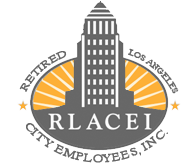
LACERS BOARD UPDATE
By Michael R. Wilkinson, LACERS Commissioner
Email: MikeWilkinson4LACERS@gmail.com
The LACERS Board and investment staff use a mix of investments to support long-term growth with everything from traditional stocks and bonds to alternative investments such as private equity. The board aims to meet our assumed rate of return of 7.0 percent using a mix of investment types.
Private equity investment is a class that promises high returns, but its performance can vary from year to year. The report we have received from our private equity consultant, Aksia, is for the most recent period ending Sept. 30, 2022. The current board policy commits 16 percent of the plan assets to private equity, and the actual exposure for this period is 18.9 percent. The target exposure is approximately $3.2 billion, while the actual exposure is $3.8 billion.
The private equity program returned (internal rate of return, IRR) the following:
- 0.20 percent for one year;
- 21.9 percent for three years;
- 17.9 percent for five years;
- 14.7 percent for ten years;
- 13.6 percent for 20 years; and
- 12.4 percent since inception (1995).
The one-, three- and five-year returns beat the benchmark, while the other lagged the benchmark.
The benchmark has evolved over the years using an index of publicly traded stocks plus a risk premium. The benchmark is now pegged to the Cambridge Associates Global Private Equity and Venture Capital Index.
An important feature of a successful private equity program is to keep making regular investments and not try to time the market. Regular investing makes sure that we don’t miss the opportunity to invest in very profitable markets when prices are depressed. It is easy to identify these investment opportunities looking in the rear-view mirror, but not so simple to look at the investment world going forward.
The LACERS program is mature, meaning it has been in operation for years, and many investments are in the distribution phase in which they are distributing more money than they are receiving in contributions to the investments. This results in the investment being “cash flow positive,” which provides money for meeting the pension roll, making new investments and other pension expenses. The LACERS plan has been cash flow positive for most of the past ten years.












